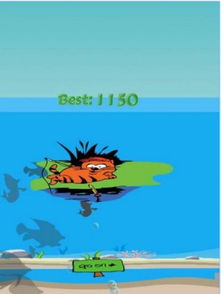Introduction:
Fishing, an ancient pastime that has stood the test of time, is a beloved activity for enthusiasts around the world. Whether you're a seasoned angler or a beginner looking to cast your line into the unknown, knowing the right fishing techniques can make all the difference. In this article, we'll delve into the art of fishing, offering you a treasure trove of tips, detailed illustrations, and engaging video tutorials to help you become a master angler. So, let's get started on your journey to fish-catching finesse!
Section 1: Basic Fishing Equipment
Before we dive into the fishing techniques, it's essential to have the right gear. Here's a list of basic equipment you'll need:
- Rod and Reel: The rod is your fishing partner, and the reel is where the magic happens. Choose a rod that matches the type of fish you're targeting and a reel that complements your rod.
- Line: The line connects your bait to your rod and is available in various strengths and materials. Make sure it's suitable for the fish you're after.
- Hooks: The hook is what catches the fish. Choose the right size and type based on the bait and fish species.
- Bait or Lures: Natural bait like worms, insects, or fish can be used, or you can opt for artificial lures that mimic prey.
- Sinkers and Floats: Sinkers weigh down your line, while floats keep your bait at a specific depth.
Section 2: Choosing the Right Spot
The location you choose can significantly impact your fishing success. Here are some tips for selecting the perfect spot:
- Research: Use maps, apps, and local knowledge to find areas with fish populations.
- Observe: Look for signs of fish activity, such as bubbles, ripples, or birds diving.
- Seasonal Patterns: Fish tend to migrate with the seasons, so consider the time of year when planning your fishing trip.
Section 3: Casting Techniques
Casting is the act of throwing your line into the water. Here are some essential casting techniques:
- Backcast: Hold the rod with both hands and sweep it back over your shoulder. Then, release the line as you bring the rod forward.
- Forward Cast: Similar to the backcast, but with a focus on a smooth forward motion.
- Roll Cast: Ideal for close quarters, this technique involves rolling the line off the rod tip.
Section 4: Luring and Baiting Techniques
Once you've cast your line, it's time to attract the fish:
- Natural Bait: Fish for the right bait, and present it in a way that mimics its natural behavior.
- Artificial Lures: Use lures that mimic the movement and appearance of fish prey. Experiment with different retrieves and presentations.
- Timing: Watch for fish strikes and be ready to set the hook at the right moment.
Section 5: Setting the Hook and Reeling In
When a fish bites, here's how to handle it:
- Set the Hook: When you feel a tap or pull, quickly and firmly pull back on the rod to set the hook.
- Reeling In: Once the fish is hooked, reel it in slowly and steadily, avoiding sudden movements that might cause the fish to break free.
Section 6: Fishing Techniques for Different Fish Species
Different fish species require different techniques. Here are some examples:
- Bass: Use a combination of casting and bottom fishing techniques. Target areas with structure like rocks, logs, or weeds.
- Salmon: Salmon are often found in fast-moving water. Use a fly rod and cast upstream with a sinking line.
- Trout: Trout are often found in clear, cold water. Use light tackle and present your bait or lure in a natural, unobtrusive manner.
Section 7: Safety and Etiquette
Fishing is not just about catching fish; it's also about respecting the environment and fellow anglers:

- Safety First: Always wear a life jacket if you're fishing from a boat or in deep water.
- Leave No Trace: Dispose of trash properly and avoid disturbing the natural habitat.
- Respect Other Anglers: Be mindful of others' fishing spots and avoid casting over their lines.
Conclusion:
Fishing is an activity that combines patience, skill, and a deep connection with nature. By following the tips, techniques, and video tutorials provided in this guide, you'll be well on your way to mastering the art of fishing. Remember, the key to success is practice and a willingness to learn. So, grab your rod, reel, and tackle box, and head out to the water to start your fishing adventure!












